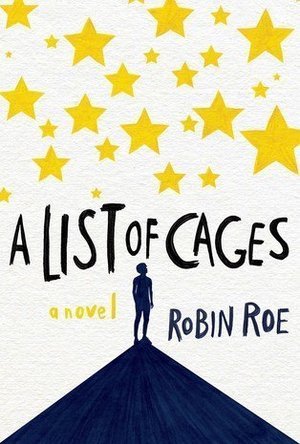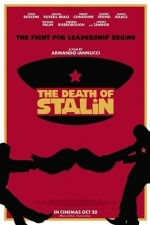
WAFFL: Fitness coach,health meal,body & weight app
Health & Fitness
App
WAFFL is the most effective body transformation app on the market. WAFFL prepares your meal plans,...

Powered Now: Invoice & Quote
Business and Utilities
App
Award winning invoice, quoting and scheduling app for small businesses, tradesmen, contractors and...

Homer - Kids Learn to Read App
Education and Entertainment
App
Welcome to Homer — the #1 learn to read program for kids ages 2-8, shown to increase early reading...

JAUMO Flirt Chat
Social Networking and Lifestyle
App
Flirt. Chat. Date. Dating should be simple, fun, and fulfilling. Not stale, complicated, or awkward....
Charlie Cobra Reviews (1840 KP) rated The Umbrella Academy in TV
Jul 5, 2020
On October 1st, 1989, 43 women around the world give birth although none of them were pregnant that morning. Eccentric billionaire Sir Reginald Hargreeves (Colman Feore) adopts 7 of the children and turns them into a superhero team called, "The Umbrella Academy. The children are given numbers instead of names and even though 6 of them fight crime, 1 of them, Vanya/#7 (Ellen Page) is kept apart for not having any powers. Present day, the estranged siblings reunite when they learn their father has died. At the funeral, #5 (Aidan Gallagher), which has been missing for over a decade, reappears from the future out of a blue portal and reveals to the others, that the world will end in a matter of days.
This show is stellar. It's a ride that you shouldn't miss. It's good to see a comic book series adaptation that is not from Marvel or DC and you can feel that it's a fresh take and different. I think the writers for the show did a good job on making it very three-dimensional. It's rated TV-14 so it's for teenagers and adults but also for comic book fans and sci-fi fans. That being said it does get pretty weird and far out there, so might not be for everybody but it's definitely better than what the critics are saying. Yes it does have some issues; like the dialogue might not be the best, there being some plot holes possibly, and some complaints of other comic book shows or movies having done that before. But it does have plenty of pluses; the soundtrack is phenomenal, the CGI is on par with that of big-budget movies, and the casting is very good. They were able to pull off the whole dysfunctional family vibe very well. I wanted to give it a point higher but I did understand some of the other points that other critics made about it. I give it a 8/10 but I also give it my "Must See" seal of approval. So if you haven't seen it yet what are you waiting for.

Wetter - Radar - Sturm mit MORECAST App
Weather and Utilities
App
MORECAST is Your Complete Weather App with Radar&Globe and many more features! The MORECAST weather...
Hazel (1853 KP) rated A List of Cages in Books
Dec 17, 2018
Debut novelist Robin Roe is emerging with a bang with soon-to-be-published young adult novel, <i>A List of Cages</i>. Dealing with relatable school experience as well as devastating, painful realities, Roe engages the reader in a gripping, heartbreaking narrative.
Told through the words of two characters, <i>A List of Cages</i> explores contrasting personalities of high school students. On the one hand there is Julian, a quiet, anxious 14-year-old who is often ostracized and ridiculed by the members of his classes. Suffering from dyslexia, Julian does not enjoy school or have any friends to talk to. To make things worse, his parents have died, leaving Julian in the care of irascible Uncle Russell. In contrast, Adam, a senior, is a popular, well-loved student, whose diagnosis of ADHD causes him to be loud and energetic – the opposite of fearful Julian.
Having known Julian before the death of his parents, Adam is quick to notice the change in Julian’s personality and uses his role as aide to the school psychologist to get to know him better. Much to his friends’ unease, Adam begins bringing Julian along to parties, concerts and days out where, despite initially sticking out like a sore thumb, Julian begins to relax and realize that people enjoy having him around. Yet, Adam is still acutely aware that something is not right, and although suspicious of Julian’s uncle, does not do anything until it is almost too late…
For a fairly short story, <i>A List of Cages</i> covers a broad range of themes. Many of these are comparisons that reveal the potential problems students may face during high school. The obvious issue of learning difficulties are highlighted by Adam’s ADHD and Julian’s Dyslexia, as well as the contrasting ways teachers deal with them. There is also the difference in personality that alters the way the characters are received by their peers.
A prominent theme is grief – coming to terms with the sudden deaths of parents; but the most important subject raised is the advantage an ignoble adult may take on a vulnerable child. The abuse inflicted on Julian is demoralizing and painful to read - the understanding that this is a real issue in today’s world, shatteringly upsetting. The ease with which an abuser controls their victim is extremely scary, however the knowledge that there are people around to help and/or rescue the child is uplifting.
<i>A List of Cages</i> has been listed as suitable for readers between the ages of 12 and 18, however I disagree. The distressing storyline will most likely upset the lower end of this scale, especially as at that age they may not be able to fully understand the circumstances described. The occasional use of expletives support my opinion that older readers are the more appropriate audience.
It may take a few chapters to get a feel for the book, however <i>A List of Cages</i> is a highly recommended novel. Many writers over the past decade have brought topics previously taboo to readers’ attentions. Robin Roe continues to create an awareness of such matters through her incisive story. Her writing style will appeal to many well-read teenagers, and it is hoped that she will continue publishing works in this vein.
Bob Mann (459 KP) rated The Death Of Stalin (2017) in Movies
Sep 29, 2021
Rupert Friend (centre) tries to deliver a eulogy to his father against winged opposition. With (from left to right) Michael Palin, Jeffrey Tambor, Steve Buscemi and Simon Russell Beale.
It should come as no surprise then that his new film – “The Death of Stalin” – follows that same pattern, but transposed into the anarchic and violent world of 1950’s Russia. Based on a French comic strip, the film tells the farcical goings on surrounding the last days of the great dictator in 1953. Stalin keeps distributing his “lists” of undesirables, most of who will meet unpleasant ends before the end of the night. But as Stalin suddenly shuffles off his mortal coil, the race is on among his fellow commissariat members as to who will ultimately succeed him.
Stalin…. Going… but not forgotten.
The constitution dictates that Georgy Malenkov (an excellently vacillating Jeffrey Tambor) secedes but, as a weak man, the job is clearly soon going to become vacant again and spy-chief Lavrentiy Beria (Simon Russell Beale) and Nikita Khrushchev (Steve Buscemi) are jostling for position. (No spoilers, but you’ll never guess who wins!). Colleagues including Molotov (Michael Palin) and Mikoyan (Paul Whitehouse) need to decide who to side with as the machinations around Stalin’s funeral become more and more desperate.
The film starts extremely strongly with the ever-excellent Paddy Considine (“Pride”) playing a Radio Russia producer tasked with recording a classical concert, featuring piano virtuoso Maria Yudina (Olga Kurylenko, “Quantum of Solace”). A definition of paranoia in action!
Great fingering. Olga Kurylenko as Yudina, with more than a hand in the way the evening’s events will unfold.
We then descend into the chaos of Stalin’s Russia, with mass torture and execution colouring the comedy from dark-grey to charcoal-black in turns. There is definitely comedy gold in there: Khrushchev’s translation of his drunken scribblings from the night before (of things that Stalin found funny and – more importantly – things he didn’t) being a high point for me. Stalin’s children Svetlana (Andrea Riseborough, “Nocturnal Animals”) and Vasily (Rupert Friend, “Homeland”) add knockabout humour to offset the darker elements, and army chief Georgy Zhukov (Jason Isaacs, “Harry Potter”) is a riot with a no-nonsense North-of-England accent.
Brass Eye: Jason Isaacs as the army chief from somewhere just north of Wigan.
Production values are universally excellent, with great locations, great sets and a screen populated with enough extras to make the crowd scenes all appear realistic.
Another broad Yorkshire accent: (the almost unknown) Adrian McLoughlin delivers an hysterical speaking voice as Stalin.
The film absolutely held my interest and was thorougly entertaining, but the comedy is just so dark in places it leaves you on edge throughout. The writing is also patchy at times, with some of the lines falling to the ground as heavily as the dispatched Gulag residents.
It’s not going to be for everyone, with significant violence and gruesome scenes, but go along with the black comic theme and this is a film that delivers rewards.

Happy Waves: Australia's Meditation App
Health & Fitness, Lifestyle and Stickers
App
Guided meditation for everybody and every mind. Only on the Apple App Store. Happy Waves helps you...
Emma @ The Movies (1786 KP) rated Portrait of a Lady on Fire (2019) in Movies
Aug 16, 2020
Marianne is hired to paint a wedding portrait of Héloïse in secret after a failed attempt has left her against the whole idea. Marianne is presented as a companion and spends her days observing the bride to be before taking to her chamber to paint at night. As her deadline approaches the pair's bond goes from strength to strength despite their future being set in stone.
Portrait is simple in so many ways and yet utterly complex. Set mostly in a desolate island location in a large family home you would expect to have the ornate and busy look of a period drama, but this is the unfussiest film I've seen in this genre. There's no clutter, no excess characters, no frivolous dialogue or scenes, their relationship is all that needs to be focused on, everything else just happens to be there.
It's difficult to describe how this film made me feel, it's serene even in the chaotic moments and I keep finding myself at a loss when it comes to putting that down in words.
I could gush on about Portrait for ages but I don't want to take away from you seeing it, the fact is that it's breathtaking. The shots, the dynamics of the cast, the fact that the film doesn't need filler... I was unsure going in (even though I wanted to watch it) but by the end I was a devastated wreck who wanted to see it all over again.
Originally posted on: https://emmaatthemovies.blogspot.com/2020/08/portrait-of-lady-on-fire-movie-review.html



